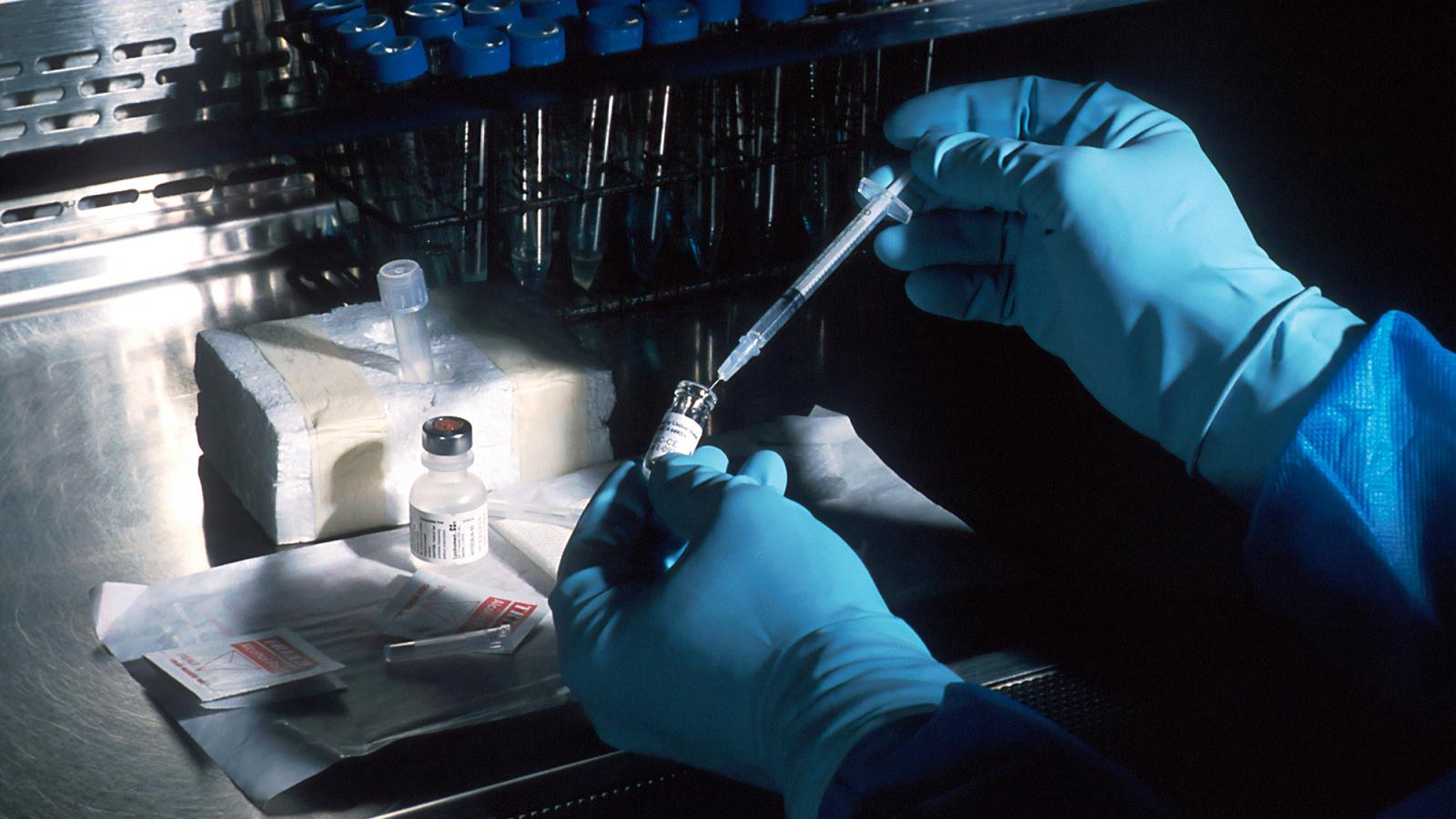Bone marrow biopsy

These tests involve taking a tiny sample (biopsy) of your bone marrow and looking at it under a microscope. The sample is taken from the inside of your bone, usually the hipbone, using a needle. A sample of your bone marrow is drawn into a syringe. Bone marrow is red in colour and looks very like blood.
- When a sample of semi-liquid bone marrow cells is taken, it is called an aspirate.
- When a tiny piece of bone or solid marrow is taken, it is a trephine biopsy. A different kind of needle is used to do the trephine biopsy.
Both can be done at the same time.
You can also have a bone marrow aspirate and trephine biopsy taken from your breastbone, however this does not happen often.
This test gives your doctors more information about the structure of your bone marrow, the types of cells in your bone marrow and the number of cells in your bone marrow (too many or too few).
Preparing for a bone marrow biopsy
This test is usually done as an outpatient (you don't to stay in hospital overnight). You are usually allowed to eat and drink beforehand. Take your medications as normal unless you are told not to. Care has to be taken if you are on warfarin, aspirin or any other drugs that thin your blood. Your doctor will advise you about this.
Will I have pain relief / anaesthetic?
You will be given a local anaesthetic to numb the area. You will be asked to lie on your side with your knees tucked up to your chest. You will be helped to get into the right position for the doctor/nurse to get the best sample. A needle is passed through your skin into your bone marrow. A tiny sample of the bone and bone marrow is then taken.
Does it hurt?
You will have a local anaesthetic, but you might have some discomfort during the test. You might feel a pressure sensation. The area might be tender and sore for a few days afterwards. You can take a mild painkiller for a day or two if needed. If the pain gets worse, tell the hospital.
After the test
You may be asked to lie on your back for 10–15 minutes to stop any possible bleeding. A small plaster is put on the area, which might feel tender and sore for a few days afterwards.
How long does it take?
About 20-30 minutes.
Are there side-effects?
Any side-effects are mild and should clear up quickly. For example:
- Bleeding: Where the needle goes in. If the bleeding is heavy, tell the hospital.
- Bruising: You may get a dark patch under your skin (haematoma).
- Infection: It’s possible to get an infection where the needle goes in, but it’s rare. If the area gets red or sore or you have a temperature, let the hospital know.
- Pain: Some people can experience pain after the local anaesthetic wears off. Your doctor or nurse will advice you about what pain relief to take if you need it.
For more information
Phone
1800 200 700



